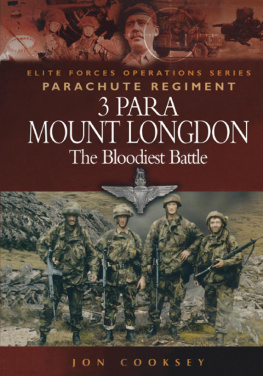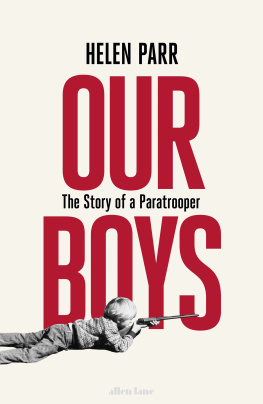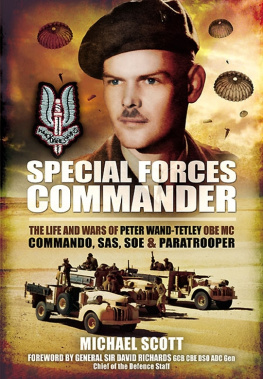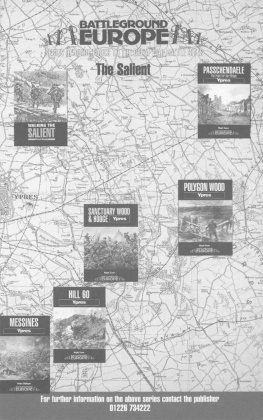READERS OF THIS book should understand that the story is told from memory. If you were there it may have been different; memories become rose-tinted with the years. Three incidents have deliberate misinformation to avoid identifying individuals and some names have been changed. Most surnames were avoided for reasons of security.
Fighting Scared conveys how I felt at the time. If I was proud of my violent behavior then, I am not now. If I disliked or resented an individual then, it is unlikely that I feel the same way today.
First Kill
THE TWO MASKED men had forced the lock on the back door of the red-brick terraced house and entered through the kitchen. It was 3 a.m.; the house was still and quiet. They knew the way to the main bedroom- all these Belfast two-up, two-downs were the same, and it didn't take a Ph.D. to figure out in which bedroom the adults were sleeping. They crept up the creaking stairs and slowly opened the door. The man sat up in bed. Believing it to be one of the children from the other room, he asked, in a calm voice, 'What is it?'
The two men fired together, one with a sawn-off shotgun, the other with an automatic pistol. The bullets and shot spread blood across the sheets as their intended victim rolled onto the floor and lay still. As the firing stopped, the penetrating sound of a baby crying filled the room. The gunmen were gone, down the stairs and out through the back door to the waiting getaway car.
In the house, the children screamed as their father lay beside the bed where he had fallen, half wrapped in the blood-smeared sheets. Their mother hadn't moved since the door had first opened: the shotgun had blasted straight through the blankets and killed her as she slept. The baby standing and howling in the cot he shared with his sister had no idea how lucky he was not to have been hit by the ricochet that tore open the little girl's head and left her lying motionless at his feet.
The car took the corner fast. It was just three minutes since the attack and now the terrorists needed to get out of the area before the security forces got their act together. As the vehicle rounded the corner, the driver saw the Land Rover blocking the road and panicked.
The car's speed and the reaction of the driver immediately alerted us; we cocked our weapons, high -velocity self-loading rifles (SLRs), capable of killing a man at 1,000 yards with a round that travels at 2,300 feet per second. As the car slewed to the left in an abortive attempt to turn round, a Thompson submachine-gun opened fire from the rear right window. Any automatic weapon fired from a moving vehicle needs an expert hand to achieve any semblance of accuracy; thank fully, the firer in the back of the car was no expert and the .45 rounds struck the brick wall high above our heads.
The car reversed across the road, still trying to change direction.
We dropped to the ground and returned fire. The noise was deafening; although I could hear shouting, I felt cocooned in an invisible shell that separated me from the voices. My eyes and mind were totally focused on the turning vehicle. My rifle sights were silhouetted in the lights beyond the car, and I could now see the vehicle beginning to move away. Heads bobbed in the seats in front of my eyes as I consciously breathed out and squeezed the trigger: four, five, six, seven times. There were no obstructions, no parked cars or civilians to get in the way, so we let rip, firing continuously into the car until it smashed into a lamp post and came to a violent and sudden halt. It had been hit more than twenty-five times.
The silence was disturbed by the hiss of a cracked radiator as it spilled its contents onto the ground. Steam rose like smoke into the midnight air. We moved carefully towards the car, hugging the shadows and reloading our weapons while the opportunity was there. Now was the time to be frightened: now we had time to think. A wounded man is a deadly creature, and a dying man has nothing to lose.
From about ten feet away we could see that there were four men in the car. The driver was dead - the front of his face was a big hole, so there was no guesswork needed there. He was slumped back against the seat with his head protruding from the shattered side window. The front-seat passenger was moving, breathing noisily. Two of us moved in closer while the other two covered the street, watching for other dangers. As we got to within four or five feet of the car, there was a sudden movement on the rear seat. Our rifles exploded simultaneously whoever had moved would be moving no more. Now they were all dead.
I've withheld some details of this awful incident to avoid identifying the families of the victims and these particular gunmen. But 'freedom fighters' or 'terrorists', Protestant or Catholic, it made no difference to me. They were the enemy, and today they had lost the fight.
No Place to Hide
I WAS BORN on 23 March 1957. My mother worked in a hospital laundry while my gran and granddad looked after me in their little three-bedroomed semi-detached house in a small village called Weybourne in the South of England.
My only real memory of my granddad is of me standing looking up at him over the rim of the dining table on a Sunday morning. Granddad was the only one to get a cooked breakfast, and I would stand next to his knees and ask for the bacon rind to chew. He would cut it off and give it to me, and I remember feeling very contented with this largesse from his plate.
My mother was a beautiful woman; tall and slim, with dark locks of curly brown hair around a captivating face. She had warm, smiling hazel eyes and a gently turned-up nose. The sixth child in a family of seven, she had been blessed with a good brain and a wild, romantic and independent nature that determined the course of her life from an early age. The year after she left school at the age of seventeen, I was born, putting an abrupt end to any career plans she might have cherished.
While she was pregnant she married Bob, a known thief and safe breaker who was not clever enough to stay out of prison. He spent most of their married life inside. Mum tried desperately hard to support Bob, and her marriage, but after several convictions, she gave up. I never knew him well enough to recognize him; his only legacy to me was the insecurity of growing up without a father.










